What Is Professional Dental Cleaning?
Oral prophylaxis is a dental procedure that involves the thorough cleaning of the teeth, gums, and surrounding tissues to remove plaque, tartar, and other debris that can cause dental problems. The procedure is performed by a dental hygienist, who uses specialized tools to remove the buildup of bacteria and plaque from the tooth surfaces, between the teeth, and below the gum line.
Oral prophylaxis is a preventive dental measure intended to maintain good oral health and prevent dental problems such as cavities, gum disease, and bad breath. It is typically performed during routine dental visits and is recommended every six months for most people.
In some cases, the dentist may use a fluoride treatment after the cleaning to strengthen the tooth enamel and provide additional protection against decay. If there are any issues with the teeth or gums, the dentist may recommend further treatment, such as fillings or gum disease treatments.
Overall, the goal of oral prophylaxis is to keep your mouth healthy and prevent dental problems before they become more serious.
The 2 Main Procedures In Professional Dental Cleaning Are- Dental Scaling And Dental Polishing
Dental Scaling
Tooth scaling is a dental procedure that involves removing the buildup of plaque and tartar from the surfaces of the teeth. The process usually involves the following steps:
1. Preparation: Before beginning the scaling process, your dentist will conduct an examination to assess the overall health of your teeth. They may also take X-rays to check for any underlying dental issues.
2. Scaling: The scaling procedure begins with the dentist using a specialized instrument called a scaler to scrape away the plaque and tartar from the tooth surfaces. They will typically use a combination of hand instruments and an ultrasonic scaler that uses high-frequency vibrations to break up the buildup. The process can be uncomfortable, but your dentist will take measures to minimize any discomfort.
3. Polishing: After the scaling is complete, the dentist will typically polish your teeth to remove any remaining stains and give them a smooth, shiny surface. They may use a rubber cup and a special polishing paste to achieve this.
4. Fluoride Treatment: Finally, the dentist may apply a fluoride treatment to help protect your teeth against future decay. The fluoride treatment is usually applied as a gel or foam and allowed to sit on the teeth for a short period.
Overall, tooth scaling is an important preventive measure that helps keep your teeth and gums healthy and reduces the risk of dental problems such as cavities and gum disease. It is usually performed as part of a routine dental checkup and cleaning, and can be done in a single visit.
Types Of Scaling Procedures
There are two types of scaling procedures:
1. Supragingival scaling:
Supragingival scaling is a dental procedure commonly referred to as superficial or above the gum scaling. It involves the removal of the plaque or tartar from the visible part of the tooth that is visible above the gum line. The dentist uses hand-held scaling instruments or ultrasonic scaling instruments to scrape away the buildup of plaque and tartar on the tooth surface.
This procedure is typically performed during a routine dental check-up and cleaning, and is usually recommended every six months to maintain good oral health.

2. Subgingival scaling:
Subgingival scaling is a dental procedure that involves the removal of plaque or tartar buildup from below the gum line. This type of scaling is also known as Deep or Below the gum scaling. Subgingival scaling is typically performed when an individual has developed periodontal disease or gum disease, as the bacteria causing the disease can attack beneath the gum line. The condition can result in inflammation, swelling, and bone loss.
During subgingival scaling, a dentist inserts an instrument below the gum line to remove tartar and plaque buildup. The procedure may also involve root planing to smooth out the root surface and remove any rough areas where bacteria can attach, and antibiotic treatment to kill any bacteria present in the periodontal pocket.
Subgingival scaling is more complex than supragingival scaling and is done only by a professional dentist or a periodontist. It may require multiple visits, and the patient may be given anesthesia during the treatment.
Manual Scaling
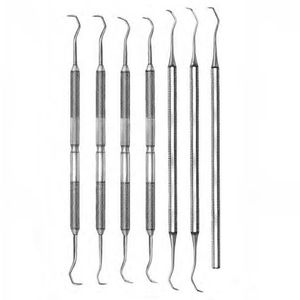
Manual scaling is a dental procedure used to remove plaque and tartar buildup on the tooth surfaces. The process involves using a handheld scalpel instrument to scrape away the buildup of bacterial plaque and tartar from the teeth.
During the procedure, the dentist applies pressure with the scalpel instrument to remove the hard deposits from above and below the gum line. The dentist may use both a flat scaler and a periodontal scaler to scrape away the buildup of tartar. The scale is often curved to match the shape of the tooth surface to increase the efficiency of the procedure.
Manual scaling is a technique that requires both skill and experience to carry out effectively. The procedure may be uncomfortable, and the dentist may use local anesthesia to minimize any discomfort. Manual scaling can be done as part of a regular dental checkup and cleaning or as part of the treatment for more advanced gum disease.
Pros of Manual Scaling:
1. Precise: Manual scaling is a precise and controlled process that allows the dentist to target the specific areas of the teeth where plaque and tartar buildup.
2. Minimally Invasive: Manual scaling is a minimally invasive procedure that causes less discomfort and swelling than other invasive methods.
3. Suitable for All Patients: Manual scaling is suitable for patients of all ages, including those with sensitive teeth.
4. Cost-effective: Manual scaling is usually less expensive than other invasive procedures such as laser therapy.
Cons of Manual Scaling:
1. Time-consuming: Manual scaling is a time-consuming process, and it may take longer to remove extensive plaque and tartar buildup.
2. May cause discomfort: Manual scaling can be uncomfortable and may cause gum irritation during the procedure.
3. Limited Access to Hidden Areas: Manual scaling may not be able to access hidden areas between the teeth effectively.
4. May Cause Sensitivity: After manual scaling, some patients may experience sensitivity to cold and hot foods or drinks for a short period.
5. Risk of Infection: Manual scaling involves the use of instruments that can cause tissue damage, bleeding, and the risk of infection. However, this is rare and can be minimized by choosing a qualified dental practitioner.
Ultrasonic Scaling

Ultrasonic scaling is a dental procedure used to remove plaque and tartar buildup on the tooth surfaces using high-frequency vibrations. The ultrasonic scaler device uses sound waves to loosen and remove the hard deposits of tartar and bacterial plaque that are difficult to remove with traditional manual scaling instruments.
The procedure involves using a handheld instrument consisting of a metal tip and a water spray. The tip of the ultrasonic scaler vibrates about 20,000 to 50,000 times per second, which creates tiny bubbles in the water spray. These bubbles implode, and the force of imploding bubbles helps to dislodge tartar and bacterial plaque from the teeth.
The benefits of using ultrasonic scaling include faster cleaning time and increased efficiency in removing tartar and plaque buildup. Additionally, the procedure helps to minimize the discomfort and bleeding that is sometimes associated with manual scaling procedures. Ultrasonic scaling is suitable for patients who have a lot of tartar buildup, which cannot be easily removed with traditional dental cleaning methods.
Overall, ultrasonic scaling is a safe and effective way to remove tartar and plaque buildup, and it’s a relatively painless procedure when compared to other scaling methods. It is a common dental procedure used in routine dental cleanings and can help to prevent and treat gum disease.
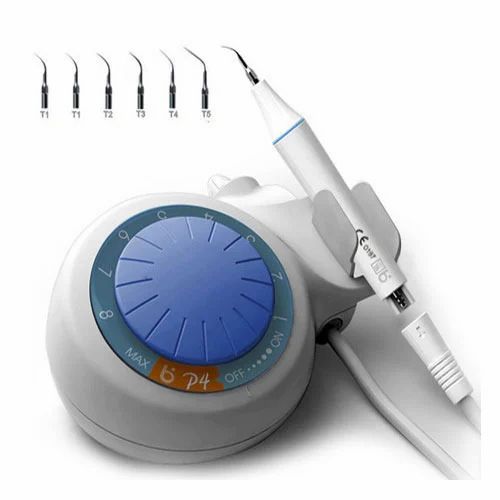
Pros of Ultrasonic Scaling:
1. Efficient: Ultrasonic scaling is a fast and efficient way to remove plaque and tartar buildup from teeth and save time as compared to manual scaling.
2. Minimally Invasive: Ultrasonic scaling is a less invasive procedure than manual scaling, and it causes less discomfort and swelling.
3. Removes Tough Deposits: Ultrasonic scaling can effectively remove stubborn deposits of plaque and tartar, making it easier for the dentist to clean teeth thoroughly.
4. Non-Contact Procedure: The procedure is non-contact, which means there is no direct contact between the instrument and the teeth, which eliminates the risk of injury to gums.
5. Reduced Discomfort: The high-frequency vibrations of the ultrasonic scaler cause minimal discomfort, and the water spray helps to cool and soothe the teeth and gums during the procedure.
Cons of Ultrasonic Scaling:
1. Generates Noise: Ultrasonic scaling produces a loud, high-pitched noise, which can be unpleasant for some people.
2. May Cause Sensitivity: After ultrasonic scaling, some patients may experience sensitivity to cold/hot foods and drinks.
3. Requires Skill and Training: Ultrasonic scaling requires a qualified dentist with proper training and experience to perform the procedure effectively.
4. Malfunction of Instrument: The ultrasonic scaling device may malfunction, which can cause tissue damage or discomfort for the patient.
5. Cost: Ultrasonic scaling is usually more expensive than manual scaling, which can be a concern for patients without dental insurance.
Overall, ultrasonic scaling is a safe and effective dental procedure with many advantages over traditional scaling methods. Its disadvantages are minimal compared to the benefits, and as long as it is performed by a skilled professional, it can help keep teeth and gums healthy.
DENTAL POLISHING

Dental polishing is a dental procedure designed to remove surface stains and improve the appearance of teeth. The procedure is usually performed at the end of a dental cleaning appointment, and it involves using a special device called a polisher or rubber cup, which is attached to a dental handpiece. Dental polishing is a non-invasive procedure, which means it does not involve drilling or removing any part of the tooth.
The polisher is used to apply a mild abrasive toothpaste or polishing paste to the teeth, which is then polished in a circular motion across the front, back, and chewing surfaces of the teeth. The goal of dental polishing is to remove surface stains, smooth out rough surfaces and ridges, and create a polished, shiny appearance for the teeth.
Dental polishing is suitable for anyone who has healthy teeth and gums, and it can be done for aesthetic reasons or to enhance oral health. It is commonly performed after dental cleaning to help maintain oral health, prevent gum disease, and keep the teeth looking their best.
Overall, dental polishing is a simple and painless procedure that can improve the appearance of teeth and enhance oral hygiene. It is a safe and minimally invasive procedure that is commonly performed in dental offices regularly.
Polishing Cups And Brushes
Polishing cups and brushes are used during dental polishing procedures to apply polishing paste or toothpaste to the teeth and create a smooth, polished surface. There are several types of polishing cups and brushes available, and which one is used typically depends on the patient’s needs and the dentist’s preference.
Here are some different types of polishing cups and brushes:
1. Rubber Cup: A rubber cup is the most commonly used type of polishing cup. It is made of rubber and has a cone-shaped head that is designed to be fitted onto a dental handpiece. The rubber cup is usually filled with a mild abrasive toothpaste, which is then applied to the teeth to remove surface stains and create a polished look.
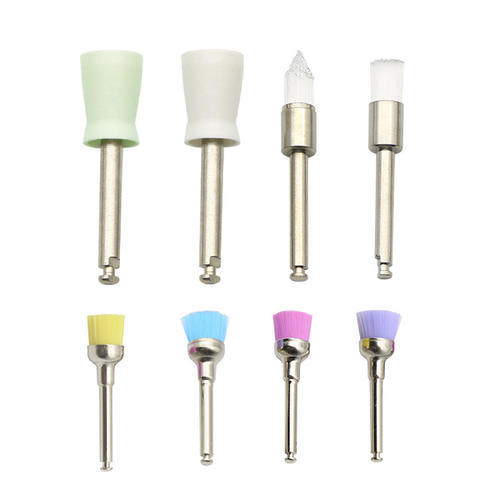
2. Prophy Brush: Prophy brushes are used to polish teeth using a polishing paste. They look similar to toothbrushes but are softer and have more bristles. These brushes are attached to a dental handpiece, and the dentist uses it to clean and polish the teeth.
3. Felt Polishing Wheel: Felt polishing wheels are used in dental laboratories to create a highly polished finish on restorations and appliances, such as dentures, bridges, and crowns. They are usually made of wool or cotton and are attached to a polishing machine.
4. Nylon Polishing Brush: Nylon polishing brushes are another type of polishing device that is made of fine nylon bristles. This is often used in areas where a rubber cup or prophy brush is difficult to reach.
There are different types of polishing cups and brushes available in the market, and the dentist will choose the one that is best suited for the patient’s needs. Overall, these polishing tools play an essential role in creating clean, polished-looking teeth.
Dental Polishing Materials
Polishing materials are used during dental polishing procedures to create a smooth, polished surface on the teeth. There are several types of polishing materials available, and the dentist will choose the one that is best suited for the patient’s needs. Here are some common materials used for polishing:
1. Polishing Pastes: Polishing pastes contain mild abrasive particles that act as a cleaner on the surface of the teeth removing surface stains and polishing them to a smooth shine. The pastes can be made from various abrasive particles such as perlite, silica, or alumina.
2. Prophylactic Paste: Prophylactic paste is another material used for polishing teeth. It contains fluoride and often has a gritty texture. This paste is also good for teeth polishing and may help prevent future decay.
3. Diamond Polishers: Diamond polishers are used in dental laboratories and are made of diamond particles that are attached to a mandrel with a flexible shank. They come in various shapes and sizes and are used to polish crowns, bridges, dentures, and other dental appliances.
4. Rubber Polishing Cups: As explained above, Rubber cups are filled with polishing paste for use on natural teeth and are an efficient way to polish teeth and remove surface stains.
5. Felt Polishing Wheels: Felt polishing wheels are a commonly used polishing tool for laboratory work such as the polishing of metal and dental restorations.
Here are some advantages and disadvantages of dental polishing:
Advantages of Dental Polishing:
1. Aesthetic Benefit: Polishing of teeth removes surface stains, making teeth look brighter and whiter.
2. Helps to maintain oral hygiene: Polishing removes plaque and tartar build-up that can cause gum disease and tooth decay, thereby helping to maintain oral hygiene.
3. Prevents cavity formation: Polishing restores mineral balance to the teeth and creates a smooth, shiny surface, which helps prevent the formation of cavities.
4. Non-invasive: Dental polishing is a non-invasive procedure that does not involve drilling or removing any part of the tooth. This makes it a comfortable experience for most patients.
Disadvantages Of Dental Polishing:
1. Tooth sensitivity: Polishing can cause temporary sensitivity of teeth and gums, which may be uncomfortable for some patients.
2. Removal of enamel: Over-polling can result in the loss of tooth enamel, which can lead to several dental problems such as cavities and tooth sensitivity.
3. Risk of infection: In rare cases, polishing can lead to an infection in the gums or mouth in patients with weakened immunity or pre-existing oral infections.
4. Not suitable for everyone: Dental polishing is not recommended or suitable for patients with certain types of dental issues, such as extensive decay, gum disease, or highly sensitive teeth.
Overall, dental polishing is a safe and effective way to maintain oral health and enhance the appearance of teeth. However, selecting an experienced dental professional and understanding the individual’s oral health needs is important for making the best decision regarding dental treatment.
Dental professionals carefully select the appropriate polishing materials, tools, and techniques based on the individual needs of each patient. Polishing materials help to create smooth, polished surfaces on teeth, appliances, and restorations for the overall beauty and health of teeth.
How Much Is Dental Cleaning [Cost ]
The cost of dental scaling and polishing varies depending on several factors, including the location, the dental clinic, and the extent of the treatment required. However, the average cost of dental scaling and polishing in the United States is around $100 to $300 per session.
Factors that can affect the cost of dental scaling and polishing include the following:
1. Location: The cost of dental scaling and polishing can vary depending on the city or state where the dental clinic is located.
2. Dental clinic: Some dental clinics charge more than others, depending on the level of service and the equipment used.
3. Extent of treatment: The cost of dental scaling and polishing can increase if the patient has extensive tartar buildup or if there are additional dental problems that need to be addressed.
4. Insurance coverage: Some dental insurance plans cover the cost of dental scaling and polishing, reducing the out-of-pocket expense for patients.
It is important to note that dental scaling and polishing is a preventive dental treatment that needs to be done regularly to maintain oral health. Some dental clinics may offer discounts or packages to patients who opt for regular scaling and polishing services. It is best to check with your dentist to understand the cost and potential discounts available to you.
FAQ’S For Dental Cleaning
1. What is dental scaling and polishing?
Dental scaling and polishing or oral prophylaxis is a dental procedure where a dental professional removes plaque and tartar build-up from teeth using specialized instruments. The procedure is then followed by polishing or cleaning of the teeth surfaces using special paste.
2. Why is scaling and polishing necessary?
Scaling is necessary because plaque and tartar build-up on the teeth can lead to gum disease, bad breath, and decay. Scaling and polishing will help to remove the accumulated build-up, improve oral hygiene and prevent gum disease and tooth decay.
3. Is the scaling process painful?
The procedure can cause some discomfort, but it is not typically painful. Numbing agents may be used to relieve discomfort before or during the procedure to make the patient more comfortable.
4. How long does scaling and polishing take?
The duration of the process depends upon the amount of build-up on the teeth which in turn varies from patient to patient. On average scaling and polishing may take up to 30-60 minutes, but it can take longer in some cases.
5. How often should scaling and polishing be done?
Scaling and polishing must be done every 6 to 12 months in most cases. However, if a patient has gum disease or other oral health issues, they may need more frequent scaling and polishing to maintain optimal oral hygiene.
6. Are there any risks associated with scaling and polishing?
Scaling and polishing have minimal risks. Some patients may experience sensitivity or bleeding during or after the procedure. Other rare risks include damage to the gum tissues and infections.
7. How can I prepare for dental scaling and polishing?
To prepare for scaling and polishing, patients must maintain proper oral hygiene, brush twice daily, use dental floss regularly and avoid smoking. Patients can also ask their dentists about specific dietary changes that will help improve their oral hygiene before their scaling and polishing procedure.



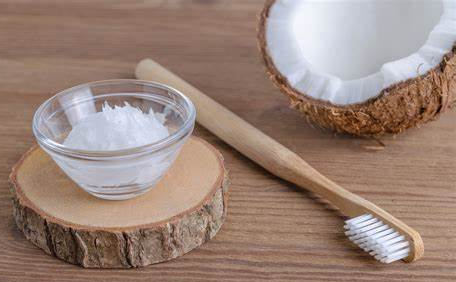
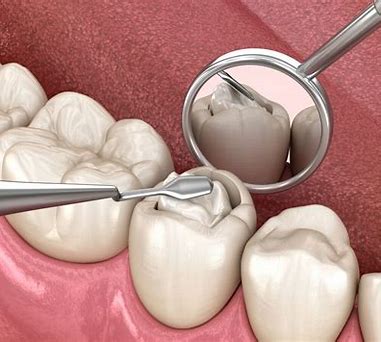
4 thoughts on “Polish Your Way to a Radiant Smile: A Comprehensive Guide to Dental Cleaning”